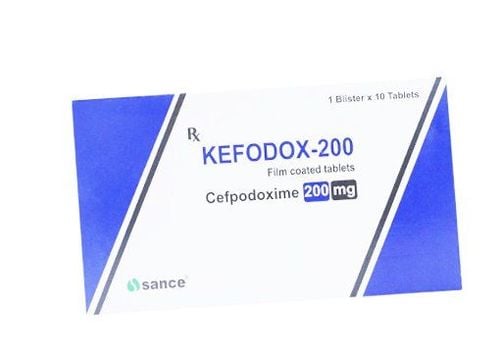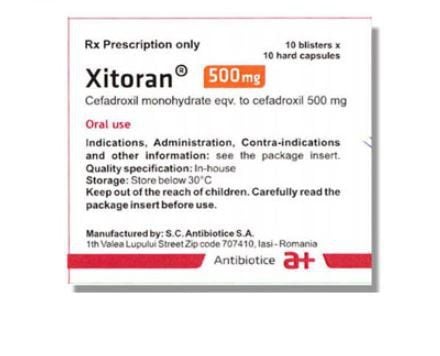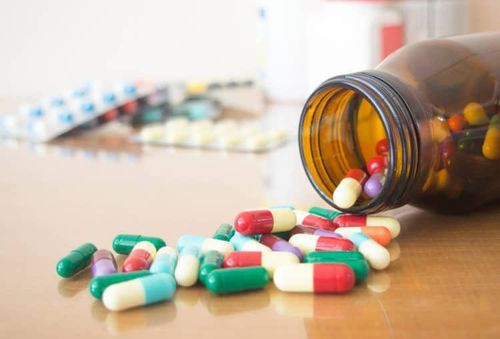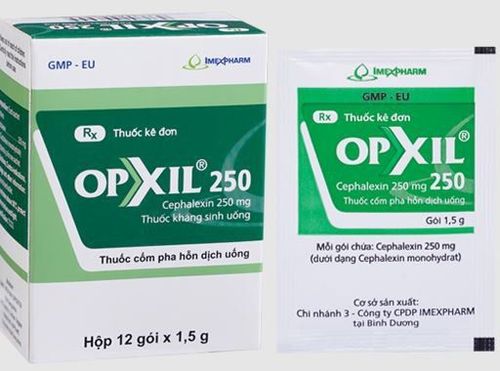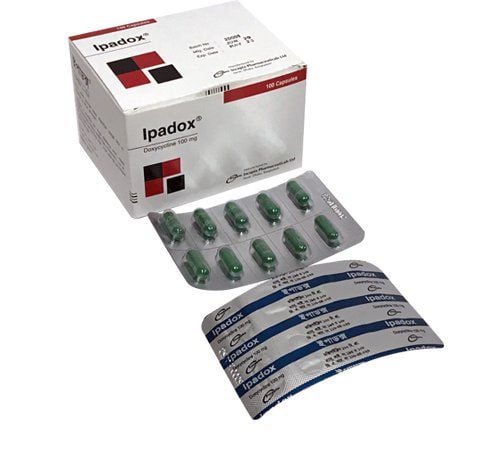This is an automatically translated article.
Markime is an antibiotic belonging to the 3rd generation Cephalosporin group. Markime is made in the form of film-coated tablets for oral use. So what disease is Markime used in, how to use it and what should be noted when using it?
1. What is Markime?
Markime is classified as an antibiotic for oral use, with the main active ingredient being Cefpodoxim, an antibiotic belonging to the 3rd generation Cephalosporin group.
Markime is prepared with many different strengths, Markime film-coated tablets will have The strength is 100mg or 200mg of Cefpodoxime as Cefpodoxime proxetil depending on the manufacturer.
2. Uses of Markime
Markime oral antibiotic is evaluated to have good absorption effect from the gastrointestinal tract with nearly 100% bioavailability. With Cefpodoxime as the main ingredient, Markime has an antibacterial effect based on the acylation of bacterial membrane-bound transpeptidase enzymes. The goal is that the cross-linking of peptidoglycan chains in the bacterial cell wall is reduced or disrupted. The afterlife bacteria born will not be able to survive in the environment and continue the task of reproduction.
In terms of antibacterial spectrum, antibiotic Markime belongs to the 3rd generation Cephalosporin line with antibacterial spectrum against Gram-positive and Gram-negative strains, including
Staphylococcus aureus except for methicillin-resistant Staphylococci Streptococcus pneumoniae, Streptococcus pyogenes, Streptococcus agalactiae, Streptococcus spp. β-lactamase-producing and non-β-lactamase-producing strains of H. influenzae H. para-influenzae, Neisseria meningitidis, Moraxella catarrhalis, Neisseria gonorrhoeae, Proteus vulgaris, E. coli, Klebsiella pneumoniae, Providencia rettgeri and Citrobacter diversus, Peptostreptococcus spp. According to research, Markime drug is completely absorbed after oral administration in patients. Markime with the active ingredient Cefpodoxime proxetil rapidly hydrolyzes to cefpodoxime in the body and enters the bloodstream. With a dose of 100 mg, peak plasma concentrations of 1.4 mg/ml occurred approximately 2 hours after oral administration. If taken with food, the extent of absorption and plasma concentrations of the drug is increased. Elimination of the drug Markime is mainly in the urine as unchanged drug, the plasma half-life is about 2 hours 50 minutes..
3. Indications for taking Markime
Use Markime antibiotic in moderate and mild infections caused by susceptible bacteria, specifically the following
Lower respiratory tract infections: Community-acquired pneumonia caused by S. pneumoniae or H. influenzae Upper respiratory tract infections: Acute maxillary sinusitis caused by Haemophilus influenzae, Streptococcus pneumoniae, and Moraxella catarrhalis. Acute otitis media caused by Streptococcus pneumoniae, Haemophilus influenzae, or Moraxella catarrhalis. Pharyngitis, tonsillitis caused by Streptococcus pyogenes. Sexually Transmitted Infections: Acute, uncomplicated cervical and urethral gonorrhea caused by Neisseria gonorrhoeae. Neisseria gonorrhoeae infection in the anus and rectum of women, uncomplicated, acute. Skin infections: Caused by Staphylococcus aureus or Streptococcus pyogenes and uncomplicated Urinary tract infections: Cystitis caused by Escherichia coli, Staphylococcus saprophyticus, Klebsiella pneumoniae, Proteus mirabilis Staphylococcus saprophyticus.
4. Contraindications to taking Markime
According to the manufacturer's instructions, the antibiotic Markime is contraindicated in patients with a history of allergy to other cephalosporin antibiotics, who have porphyria.
5. Dosage & how to use Markime
Markime is taken orally, so the patient needs to take it with 1 glass of cooled boiled water.
Markime dosage for adults
Upper respiratory tract infections: 100mg/time, 12 hours to take once, dose for 10 days Acute pneumonia in the community: 200mg/times, 12 hours to take once, dose in 14 days Uncomplicated gonococcal infections: 1 single dose 200mg Uncomplicated urinary tract infections: 100mg/time, 12 hours to be taken once, dose for 7 days Skin infections: 400mg/times, 12 hours to take 1 times, dose for 7-14 days. Markime dosage for children
Acute otitis media: 10mg/kg/day, divided into 2 oral doses a day (maximum 400mg), oral maintenance for 10 days Pharyngitis and tonsillitis: 10mg/kg/day, divided into 2 times a day (maximum 200mg), oral maintenance for 10 days Note: To increase drug concentration in plasma, it is recommended to take Markime with food.
6. Side effects of the drug Markime
In clinical trials and in patients. Markime side effects are usually mild symptoms such as diarrhea, nausea, headache. Some of the severe symptoms are hypersensitivity, rash, dizziness, thrombocytopenia or thrombocytopenia, leukopenia, eosinophilia, which are very rare.
7. Notes when using Markime
In patients with renal insufficiency with creatinine clearance less than 30ml/min and not on hemodialysis: 400mg or 200mg once, each dose is about 24 hours apart. In patients on hemodialysis, 3 times a week, 3 times a week, orally after dialysis. For patients with cirrhosis, no dose adjustment is required. There have been no cases of overdose when using Markime, however, the side effects that are warned in case of overdose are nausea, epigastric pain and loose stools. If these symptoms are present, hemodialysis or peritoneal dialysis can help remove some of the Markime drug from the body. Markime is not used in the treatment of common cold. Markime should be used during pregnancy only when absolutely necessary and prescribed by a specialist. Markime is an antibiotic belonging to the 3rd generation Cephalosporin group, used in the treatment of infections caused by susceptible bacteria. Markime is a prescription drug, patients should take the drug as prescribed by the doctor to achieve the best treatment effect.




